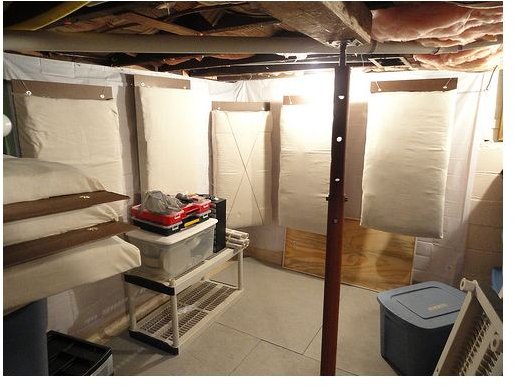Building a Home Theater Room: DIY Bass Trap
Soundproofing Your Home Theater Room
Bass traps are devices that absorb a certain amount of energy. The purpose of these devices is to keep low frequency resonance down to a minimum and to create a nice low frequency sound. Basically, this is a type of soundproofing you use when building a home theater room. You normally have to buy these devices, which can be very expensive.
Materials
Or, you can create your own DIY bass trap. While this may seem like an extremely difficult project, it actually isn’t. But, you do need the right type of material. Generally the breakdown of materials are as follows:
- Four Corner Braces or Bead
- Lumber
- Breathable Fabric
- Mineral Fiber
- Glue
- Screws
- Staple gun and staples
You need to brace the corners of your bass trap. Depending on what’s cheaper will determine if you use corner braces or bead. The corner braces are usually sold in packs of two for about $2 a piece. But, sometimes, you can get 8 foot lengths of bead for about the same price. The major difference between the braces and the bead is that the bead runs the entire length of the bass trap. And, the braces just brace the corners of the item.
You can use nearly anything for the frame of your bass trap. Since lumber (8 feet long) is readily available, that’s what most people use. Depending on the size of the bass trap, you’re looking at between $20 and $30 for the lumber. You can use nearly any type of breathable fabric for your trap. Blow on the fabric, and see if it has some resistance. If it does, use it. You can get some pretty cheap fabric from fabric stores. Just go to the clearance section, and get about ½ to 1 yard of fabric. You can often get this for about $2 to $5 per yard.
The most expensive part of your project is the mineral fiber, which costs between $50 and $100. You need a thickness of at least 4 inches. But, it may be cheaper to purchase two 2-inch thick boards. Check the prices. Make your decision between Owens Corning 703, Rockwool (6 lbs per cubic foot) or semi-rigid fiberglass insulation boards (3 lbs per cubic foot). Overall, the project should cost you about $100 to $150 depending on how much the materials cost.
Making the Bass Trap
Now, it’s time to create your bass trap. Cut your 8 foot lumber into lengths of 22 inches long. This makes four boards. Use the rest of the board and make a 48 inch cut. Connect these boards together with screws and reinforce it with glue. You should now have a frame of 24 by 48 inches. A wood screw should connect each end.
Staple the fabric to one side of the frame. Pull the fabric tight on the opposite end, and cut off the excess fabric. You can use a cheaper fabric on the back and a strong fabric on the front. Staple this fabric to the front of the frame. Place the mineral fiber on top of this fabric. Do not bunch up the fabric.
Make sure that the frame is centered over the board. Now, take the rest of the fabric and place it over both the mineral board and the back of the frame. Staple the fabric into place. Make sure that it’s tight against the board. You can fold the fabric against itself on the corners. Just make sure that fabric is secured tightly to the board. Remove any excess fabric.
If everything looks tight and secure, you are done. You have now made your own DIY bass trap.
